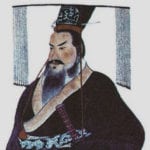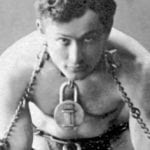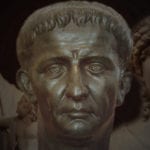 History
History  History
History  Creepy
Creepy 10 More Representations of Death from Myth, Legend, and Folktale
 Technology
Technology 10 Scientific Breakthroughs of 2025 That’ll Change Everything
 Our World
Our World 10 Ways Icelandic Culture Makes Other Countries Look Boring
 Misconceptions
Misconceptions 10 Common Misconceptions About the Victorian Era
 Mysteries
Mysteries 10 Strange Unexplained Mysteries of 2025
 Miscellaneous
Miscellaneous 10 of History’s Most Bell-Ringing Finishing Moves
 History
History 10 Great Escapes That Ended Right Back in Captivity
 Weird Stuff
Weird Stuff 10 Fascinating Things You Might Not Know About Spiders
 Food
Food 10 Everyday Foods You Didn’t Know Were Invented by the U.S. Military
 History
History 10 Most Influential Protests in Modern History
 Creepy
Creepy 10 More Representations of Death from Myth, Legend, and Folktale
 Technology
Technology 10 Scientific Breakthroughs of 2025 That’ll Change Everything
Who's Behind Listverse?

Jamie Frater
Head Editor
Jamie founded Listverse due to an insatiable desire to share fascinating, obscure, and bizarre facts. He has been a guest speaker on numerous national radio and television stations and is a five time published author.
More About Us Our World
Our World 10 Ways Icelandic Culture Makes Other Countries Look Boring
 Misconceptions
Misconceptions 10 Common Misconceptions About the Victorian Era
 Mysteries
Mysteries 10 Strange Unexplained Mysteries of 2025
 Miscellaneous
Miscellaneous 10 of History’s Most Bell-Ringing Finishing Moves
 History
History 10 Great Escapes That Ended Right Back in Captivity
 Weird Stuff
Weird Stuff 10 Fascinating Things You Might Not Know About Spiders
 Food
Food 10 Everyday Foods You Didn’t Know Were Invented by the U.S. Military
10 Suspicious Deaths Of Whistle-Blowers
Telling secrets is a dangerous endeavor, particularly when powerful people don’t want those secrets to get out. Here are 10 haunting cases of whistle-blowers who revealed secrets, only to die a short time later under mysterious or even suspicious circumstances.
10 Russian Treasury Whistle-Blower
Alexander Perepilichny had a sweet life in Russia. He was a rich, successful businessman who traveled the world. But when he refused to keep a secret, he had to give it all up.
As an investment banker, Perepilichny began to investigate fraud within the Russian economy and stumbled onto one of the biggest thefts from taxpayers in history. He gave a series of documents to Swiss officials that exposed a massive money laundering scheme in which Russia’s mafia and its government conspired to steal $230 million from the Russian treasury. Swiss prosecutors froze a Swiss bank account worth $11 million that belonged to a high-ranking government official who was implicated in the crimes.
After exposing the secrets to the public, Perepilichny began to receive death threats, reportedly from “powerful enemies in Moscow.” He promptly fled Russia for Britain, where he secretly moved to a private estate. There, he tried to live a quiet life until one fateful morning in November 2012 when he was seen leaving his house to go jogging.
A short time later, Perepilichny was found lying dead on the road by a neighbor. He had no injuries on his body and no outstanding medical conditions that would have threatened his life. When an autopsy was performed, a rare poison was found in his stomach from the deadly Gelsemium genus of plants.
After his death, an acquaintance revealed to the press that Perepilichny’s name had been put on a hit list by the perpetrators of the theft he had exposed. Perepilichny was still providing information to investigators probing the case when he died. According to a judicial inquiry, Russia’s domestic intelligence agency FSB may have played a role in Perepilichny’s death.
9 Marc Dutroux Sex Ring Whistle-Blowers
In August 1996, a 14-year-old girl in Belgium suddenly vanished from a public swimming pool. An eyewitness spotted her being taken into a suspicious van owned by Marc Dutroux and his wife. Police searched the couple’s home but didn’t find the girl.
Two days later, Dutroux and his wife astonishingly confessed. They led investigators into their horrifying basement dungeon where the missing girl was still alive almost a week after her kidnapping. Then Dutroux led police to the dead bodies of two more girls who had been held captive in another home.
After his arrest, the Belgian public became outraged over the poor police handling of the case. Dutroux wasn’t put on trial until 2004. As a result, some Belgians began to allege that there was a cover-up of a larger sex ring which included powerful government officials and police in Belgium. Jean-Marc Connerotte, the first judge overseeing the case, was dismissed for participating in a fundraiser for the parents of one of the murdered girls. In response to his dismissal, around 300,000 people marched through Brussels in protest.
During the trial, Connerotte testified that “murder contracts had been taken out against the magistrates” overseeing the investigation to prevent wider inquiries into Dutroux’s underage sex ring. In fact, 20 potential witnesses had died before they could give testimony in court, many under mysterious circumstances.
One of those witnesses was Bruno Tagliaferro, a scrap metal merchant who told prosecutors he knew Dutroux and had crucial information about the car in which two of the victims had been kidnapped. But soon afterward, Tagliaferro was found dead of an apparent heart attack. Refusing to accept this, his wife claimed that she sent tissue samples of his body to the US, which showed that he was poisoned. A short time later, her teenage son found her dead in her home.
Hubert Massa, a top prosecutor investigating the case, also died suddenly in an apparent suicide before the trial began. He didn’t leave a suicide note. Massa had been an effective prosecutor who had procured death sentences for killers in past trials.
After his trial, Dutroux was given a life sentence for his crimes. But the public was so disgusted that over one-third of Belgians with the surname Dutroux applied to legally have their names changed.
8 ISIS Whistle-Blower
Serna Shim was a naturalized American citizen who worked as a reporter for an Iranian news organization called Press TV. In October 2014, she was sent to the border between Turkey and Syria to report on the conflict between Iraqi Kurdish forces and ISIS as the Islamist militants attempted to capture a Syrian town.
While stationed at the border, Shim reported that ISIS-affiliated Al-Qaeda militants were being smuggled over the Turkish border into Syria by hiding in the back of aid vehicles owned by nongovernmental organizations. Some of these vehicles had emblems of the World Food Organization, part of the United Nation’s humanitarian branch.
These activities suggested that the government of Turkey was sheltering and supporting ISIS. Turkey had previously refused to assist Kurdish fighters in their war against ISIS. Other reports suggested that Turkey had trained ISIS militants and supplied key intelligence information that gave them an advantage when fighting the Iraqi Kurdish army.
After Shim reported on ISIS militants being moved in UN trucks from Turkey into Syria, she was accused by Turkey’s intelligence agency of being a foreign spy. This frightened Shim because Turkey had been labeled by Reporters Without Borders as “the world’s largest prison for journalists.”
Two days later, she was returning to her hotel in Suruc, Turkey, when her rental car suddenly collided head-on with a large cement mixer truck. Shim died in the crash.
Press TV called the car accident “suspicious” and claimed that the journalist had been “assassinated by the government of Turkish president Recep Tayyip Erdogan.” After the crash, the driver of the cement truck that killed Shim was arrested, but he soon disappeared.
7 Enron Whistle-Blower
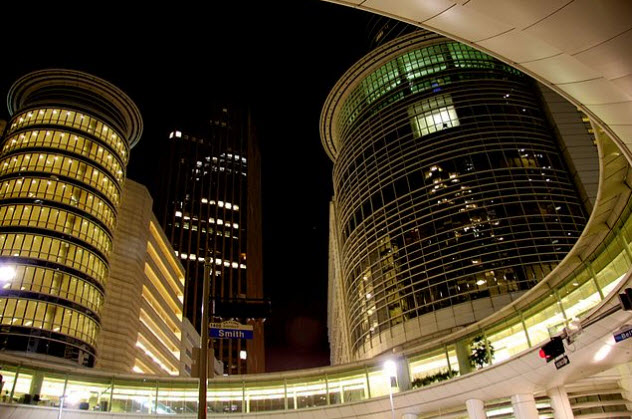
John Clifford Baxter was an Enron executive when the company’s massive criminal activities were discovered. Earlier, he had reportedly challenged Enron’s management team, including CEO Jeff Skilling, about the company’s corrupt transactions and then resigned in protest.
When Congress initiated hearings to investigate Enron, Baxter was considered to be crucial to the case because his close relationship to Enron’s CEO could have provided valuable insights into the company’s criminal activities. But two weeks before he was set to testify, Baxter was found dead in his car from a gunshot wound to the head. Police said the death was a suicide, but many details of Baxter’s death raised doubts about that conclusion.
The pistol that shot and killed Baxter used rat-shot, a fairly unusual form of ammunition that is untraceable by forensics. There were also strange, unexplained wounds on Baxter’s hands and unexplained shards of glass on his shirt.
The way the police handled the crime scene raised alarms, too. They moved the body and all the evidence—including the gun that killed Baxter—before taking photographs of the crime scene. Despite being legally mandated, no autopsy was performed on Baxter’s body to determine a cause of death. By the time an autopsy was finally ordered, Baxter’s body was already being prepared for burial by a funeral home.
When talking with a former business associate two days before his death, Baxter had said that he might need a bodyguard after agreeing to assist in the Enron investigation.
6 South African Mob Witnesses
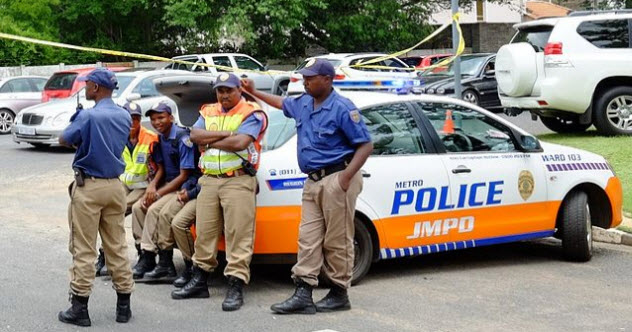
When South African crime boss George “Gewald” Thomas was finally arrested, he faced 52 charges, including seven murders, three attempted murders, weapons charges, racketeering, and breaking and entering. A four-year trial ensued that contained nearly as much bloodshed as the actions with which he was charged. Thomas was (or perhaps still is) the head of the 28s gang, one of the most dangerous gangs in South Africa.
At least 12 people linked to the case—including six whom the state intended to call as witnesses at the trial—were murdered. One of those witnesses was Haywin Strydom, who was murdered by a gang-affiliated gunman shortly before he could testify. Despite his untimely death, Strydom’s last words may have helped to convict Gewald and his gang.
When paramedics arrived, Strydom used his last breaths to identify his killers as “Gewald’s henchmen.” Eventually, Gewald was convicted and given seven life sentences plus an additional 175 years in prison.
5 Barry Seal
A gifted pilot, Barry Seal used his personal plane to smuggle cocaine for the Medellin drug cartel. Seal claimed that he had earned up to $100 million and smuggled as much as $5 billion worth of cocaine into the US.
After he was indicted on conspiracy to smuggle Quaaludes into Florida in 1984, he tried to cut a deal to avoid jail time. When the US attorney heading the case refused to drop all charges in exchange for Seal’s work as an informant, Seal hopped in his Learjet and flew to the White House. There, he met with members of the Reagan administration, including Vice President George H.W. Bush’s task force on crime.
The task force made Seal an undercover DEA operative and supplied him with a military cargo plane to smuggle cocaine from Nicaragua into the US as part of a sting operation. The cocaine in Seal’s plane was allegedly provided by the Sandinista government shortly before the Reagan administration became embroiled in the Iran-Contra scandal for illegally supplying arms and assistance to the Sandinistas’ enemies, the Contras.
Hidden cameras on the plane took photographs of the smuggling operation. The Reagan administration distributed the photos to the press, later using them to try to justify arming the Contras. At this time, Barry Seal also worked for the CIA, which had allegedly been sponsoring Contra groups that smuggled cocaine into the US. The money from drug sales then allegedly funded the Contras. If true, this meant that the CIA was backing a drug smuggling operation into the US.
Seal was now a free man, who did community service instead of jail time for the crimes he committed. However, the leak of information showed Seal’s face and allowed the cartel to identify him as a traitor. Before Seal could begin his public service work at a Salvation Army in Louisiana, he was found dead in his car with multiple bullet wounds riddling his body.
At the time of his death, Seal purportedly had the personal, unlisted phone number of Vice President Bush in his wallet. The killers were believed to be Colombian assassins who were apprehended at Louisiana’s border after Seal’s murder. They were sentenced to life in prison without parole. Seal’s death ended the DEA’s investigation into Medellin drug smuggling.
4 Iranian Secret Police Doctor
Iran’s 2009 presidential elections didn’t go as planned. After the results were announced and incumbent President Mahmoud Ahmadinejad defeated a strong opposition candidate, protests erupted across the country. Critics claimed that there were irregularities in the voting results and alleged that the election was rigged.
Police were called in to suppress the increasingly visible protests, which were dubbed the “Green Revolution.” Some 4,000 Iranians were arrested as part of police actions against the protests.
Iranian police called Dr. Ramin Pourandarjani to administer medical care to the arrested protesters who were being interrogated and tortured by Iranian authorities. Pourandarjani tried to give medical care to protester Mohsen Ruholamini, who died in prison from multiple blows to the head.
As a result of Ruholamini’s death, Pourandarjani was called to testify before a committee in the Iranian parliament about the incident. His testimony was instrumental in getting Ayatollah Khamenei to close the prison in which the incident had occurred.
However, Pourandarjani was arrested by Iranian authorities after he testified. He was taken to jail, interrogated, and eventually released on bail. However, Iranian authorities threatened to strip him of his medical license or even imprison him indefinitely if he disclosed anything more about what he had seen at the prison when he treated detainees.
After he returned to his family and friends, Pourandarjani claimed to be receiving threats against his life. Then he was suddenly found dead. The Iranian authorities kept changing the cause of death—from injuries sustained in a car accident to a heart attack to suicide to poisoning. A salad Pourandarjani had eaten before his death was purportedly laced with a lethal dose of a medication used to treat blood pressure.
Iranian authorities prevented Pourandarjani’s family from investigating his cause of death by performing an autopsy on his body.
3 Chilean Coup Whistle-Blowers
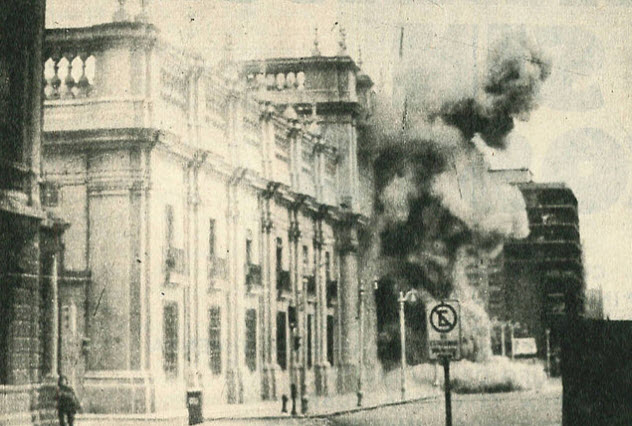
In 1973, Charles Horman was an American journalist reporting on politics in Chile when Socialist Salvador Allende was president. Horman—who supported Allende—went to the coastal town of Vina del Mar to investigate a violent military coup headed by Augusto Pinochet that had thrown the country into chaos.
To his surprise, Horman found US military personnel on the ground and US warships in the waters nearby. Supposedly, he documented some members of the US military taking responsibility for the coup, which pointed to US government involvement.
Horman received a ride back to his home in Santiago from Captain Ray Davis, who supposedly worked for the US Embassy. In reality, Davis was commanding the covert US military operation in Chile to back the military coup against Allende. He was also supposedly investigating Americans in Chile who might be radicals or subversives.
Believing his knowledge put them in danger, Horman and his wife decided to leave the country. But before they did, Horman was abducted from his home by Chilean soldiers while he was alone. He was taken to a prison camp and disappeared.
Horman’s friends and family frantically searched for him. A month later, they found his body. He had been executed by the Chilean military. Frank Teruggi, another American journalist in Chile, was also found dead. For the next 40 years, Horman’s family fought to identify Horman’s murderers and bring them to justice.
Decades after his death, the State Department released a declassified memo on the coup which said:
US intelligence may have played an unfortunate part in Horman’s death. At best, it was limited to providing or confirming information that helped motivate his murder by the [government of Chile]. At worst, US intelligence was aware the [government of Chile] saw Horman in a rather serious light and US officials did nothing to discourage the logical outcome of [Chilean] paranoia.
A Chilean spy charged as an accomplice in Horman’s death claimed that a CIA agent was present during Horman’s kidnapping and interrogation. Supposedly, the CIA agent was also present when Chilean authorities decided to execute Horman.
In November 2011, a Chilean court indicted Ray Davis. A year later, their Supreme Court approved a request to extradite Davis to Chile so he could be tried for his role in the deaths of Horman and Teruggi.
2 AMIA Bombing Investigator
The 1994 AMIA terrorist attack was the most lethal bombing in Argentina’s history, killing 85 people and injuring over 300. It occurred in one of the largest Jewish communities outside Israel, prompting the Israeli government to send Mossad agents to Argentina to investigate the attack.
The investigation was stalled by alleged incompetence and cover-ups. In September 2004, all suspects tied to Buenos Aires and its police force were found not guilty of any wrongdoing. The judge who made that ruling was impeached the following year because of his grave mishandling of the case. The not guilty verdicts sparked public outrage and resulted in a new investigation into the bombings, headed by lawyer Alberto Nisman.
Nisman soon claimed that Iran had orchestrated the terrorist attack and Hezbollah had carried it out. Supposedly, the attack was spurred by Argentina’s suspension of a contract to supply nuclear technology to Iran. Nisman also accused Argentine politicians, including President Cristina Kurcher, of deliberately hiding from the public the identity of the Iranians involved in the bombing. All charges against the president were later dismissed by an appeals court.
Nisman published a nearly 300-page report on his investigation. But just a few hours before he was scheduled to testify about his findings in front of Argentina’s congress, he was found dead in his home from a gunshot to the head. There were no signs of forced entry into his home, but a hidden entrance was open.
An autopsy ruled that Nisman’s death was a suicide even though there was no gunpowder residue on his hands. Another autopsy, undertaken at the request of Nisman’s wife, found that there was no muscular spasm in his right hand which would have been necessary to fire the gun. His body also appeared to have been moved after his death.
Video footage released five months later allegedly showed Argentine police tampering with evidence at the scene of Nisman’s death. His computer had also been accessed over 60 times after he died.
1 Iraq War Whistle-Blower
In 2003, David Kelly, a weapons inspector for the British government, was thrust into the public spotlight when BBC journalist Andrew Gilligan published their off-the-record conversation revealing that the British government’s investigators had not found any weapons of mass destruction in Iraq, despite the Bush administration’s claims otherwise.
Unknown to Kelly, the journalist then published the information he had received from Kelly and cited him as the source. The British and American public—if not the world altogether—was outraged at the revelation, which suggested that the Bush administration and the British government were lying about their reasons for invading Iraq.
Kelly was summoned to appear at a committee hearing in British parliament on July 15, 2003. He was rigorously questioned about his conversation with the BBC journalist and why it was revealed to the public. Around the same time, Kelly met with British ambassador David Broucher. Kelly told Broucher that he had promised Iraqi officials that there would be no war if they cooperated but that he would probably be found dead if Iraq were invaded.
Two days after Kelly’s testimony to the British parliament, he was found dead outside his home. He had answered some emails that morning and then left for his morning walk. Kelly’s body was found in a woodlands area about 1.5 kilometers (1 mi) from his home. He had ingested 29 pain pills, and his left wrist was slashed with a knife he had owned since childhood.
An investigation was launched into the suspicious circumstances surrounding his death. The official conclusion was that Kelly had committed suicide. After the announcement, his medical reports were sealed from public view for 70 years.
However, a series of doctors published a rebuttal of the cause of death in The Guardian, arguing that the cuts on Kelly’s wrist would not have resulted in a fatal amount of blood loss. They also claimed that the amount of painkillers that Kelly had ingested were not enough to kill him. As a result, Dr. Andrew Watt told British authorities that he believed Kelly had been murdered.
Nathan is a freelance journalist and filmmaker.
